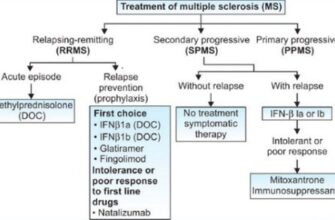As Moscow braces for an unexpected “Indian Summer” with temperatures soaring, the economic climate across Russia tells a different story – one of tightening belts, evolving market strategies, and a quiet battle against rising costs. From the subtle art of shrinking portions to the dramatic shifts in e-commerce and traditional retail, the nation is navigating a complex landscape where every ruble, and indeed every gram, counts.
The Stealthy Advance of Shrinkflation and Skimpflation
For the average consumer, the most tangible sign of economic pressure often isn`t a dramatic price hike, but rather a deceptive reduction in quantity or quality. This phenomenon, affectionately termed shrinkflation (or downsizing), has become a pervasive reality in Russian supermarkets. According to recent analyses, the period from Q2 2023 to Q2 2024 saw an average shrinkflation of 3% across various product categories. Imagine unwrapping your favorite pastry only to find it nearly 12% lighter, or purchasing a pack of smoked fish that has mysteriously shed 10% of its weight. Even everyday staples like flour and instant coffee haven`t escaped entirely, though their reductions are more modest.
The practice isn`t new; a “nine-egg” carton from an Udmurt poultry farm in 2019 sparked a wave of ironic memes, questioning mathematical norms and hinting at a rather peculiar interpretation of a “dozen.” More recently, retailers have been observed selling milk by the kilogram instead of the liter, a subtle switch that can mean receiving 970 milliliters instead of a full liter for the same perceived price.
But the story doesn`t end with less product for the same money. Enter skimpflation, an even more insidious trend where prices are maintained by replacing key ingredients with cheaper alternatives, quietly eroding product quality. Together, these two forces converge into what economists call stealthflation – a potent cocktail of diminished quantity and quality. This silent erosion affects a vast array of goods, from tea and coffee to household chemicals, shampoos, and even cosmetics. Only a handful of socially significant products, such as butter and sugar, are protected by GOST standards that regulate their minimum volume.
“Consumers are often psychologically inclined not to scrutinize the fine print on packaging, making these changes hard to detect without diligent comparison.”
The culinary world isn`t immune either. Restaurant owners, while acknowledging the temptation to compromise on quality, highlight the delicate balance required. “If we start using bad tomatoes, the guest immediately feels it,” remarks one restaurateur, emphasizing that customer loyalty hinges on maintaining standards. Ultimately, consumers are left with the task of becoming vigilant label-readers, prioritizing price per kilogram or liter over the sticker price per package.
The Tumultuous Tides of E-commerce: The Ozon Saga
While brick-and-mortar stores face their own challenges, the dynamic world of e-commerce is far from tranquil. Sellers on platforms like Ozon, a major Russian marketplace, are finding themselves caught in a maelstrom of rapidly changing policies and escalating costs. Complaints have mounted regarding Ozon`s commission structure, which sellers describe as increasingly opaque and disproportionately burdensome.
Initially, a promise of stable commissions for the fashion industry on Ozon seemed to offer a beacon of hope. However, that promise was swiftly revised, and commission rates have since surged. For instance, Fulfillment By Operator (FBO) commissions, where Ozon handles logistics, reportedly jumped from 18% to 24% in September, with a further increase to 30-31% by mid-October. Fulfillment By Seller (FBS) commissions, where sellers manage their own warehousing and shipping, can now reach an eye-watering 38%. These rates, coupled with additional charges for returns processing, acquiring services, packaging, and even seasonal adjustments, leave little room for profit. For one seller of knitted goods, Ozon`s commission alone consumes 38% of a product`s cost, pushing profit margins to a mere 7-10% before taxes.
Adding to the complexity, Ozon is reportedly shifting sellers from the FBS model to FBO, effectively forcing them to surrender control over their inventory and return processes. With the introduction of post-payment options, customer orders have indeed soared, but so have returns and cancellations, each incurring a cost to the seller. The absence of direct oversight over returned goods raises concerns about product condition and the validity of returns. While Ozon maintains its commissions are “market-level” and driven by rising operational costs, the palpable discontent among sellers underscores the intense pressure businesses face in the digital marketplace. A crucial meeting between Ozon representatives, sellers, and e-commerce associations is set to address these simmering tensions, a testament to the urgency of finding common ground.
Traditional Retail and the Shadow of Debt: Desport`s Struggle
The challenges extend beyond online marketplaces into traditional retail. The plight of Desport, the successor to the once-popular Decathlon chain in Russia, serves as a stark reminder of the unforgiving nature of the market. Facing over 720 million rubles in debt and a cascade of nearly 100 lawsuits, the retailer is now shedding stores and warehouses, with some creditors even contemplating bankruptcy proceedings.
Desport`s rapid contraction – from 35 stores at its opening to just 24 today – highlights the formidable obstacles facing established brands in a shifting landscape. The departure of Decathlon undoubtedly impacted product assortment and consumer familiarity, while fierce competition from local giants like “Sportmaster” and the relentless rise of online shopping continue to reshape consumer habits. This situation exemplifies the precarious tightrope walk for retailers trying to adapt to new market realities, often burdened by legacy infrastructure and intense competitive pressures.
The State`s Hand: Rising Excise Taxes
Adding another layer to the economic equation are impending government-led changes. The Russian State Duma is considering significant increases in excise taxes on alcohol and tobacco, set to take effect from January 1st. These hikes are poised to directly impact consumer spending and industry profitability.
For strong alcoholic beverages (above 18% alcohol by volume), the excise tax per liter of pure ethyl alcohol is projected to rise by approximately 11%. Weaker alcohol categories will see similar percentage increases. However, the most notable surges are planned for still wine (up about 31%) and sparkling wine (around 28%). This disproportionate increase on wine, experts note, seems to contradict previous governmental efforts to foster a “wine culture” in Russia, presenting a wry irony in economic policymaking.
Retail prices for these goods are expected to climb rapidly, with cheaper wines potentially seeing a 20% increase, and even premium categories rising by about 10%. By February, consumers can anticipate new, higher price tags. Furthermore, there`s a quieter, yet significant, development: the introduction of “stealth excises” on key ingredients like grain and sugar, which could subtly inflate the cost of various food and beverage items without direct consumer awareness. Similarly, tobacco and cigarette excises are set to increase by 7% and 11.3% respectively, pushing the price of a pack of cigarettes by 20-25% over the year. Factors influencing these price hikes are manifold, encompassing not just excise indexation but also ruble inflation, import costs for raw materials, and new regulatory requirements like licensing and marking.
Amidst Global Ripples: Currency and Commodities
Beyond internal market dynamics and governmental policies, Russia`s economy remains susceptible to global forces. The ruble, while experiencing a temporary strengthening due to the peak of the tax period, faces potential weakening. The US dollar, conversely, has shown signs of softening, partly in response to the looming threat of a partial US government shutdown, underscoring the interconnectedness of international finance. Oil prices, a perennial barometer for the Russian economy, have seen declines, influenced by factors such as potential OPEC+ output increases and the resumption of oil supplies from Iraqi Kurdistan via Turkey. These global ripples, though often perceived as distant, inevitably translate into tangible impacts on domestic markets and everyday life.
Conclusion: The New Economic Reality
As Moscow experiences its late burst of warmth, the underlying economic currents across Russia tell a story of constant adaptation. From the subtle art of shrinkflation reshaping consumer habits to the intense pressures on businesses in both digital and physical realms, the landscape demands vigilance and strategic maneuvering. Whether it`s deciphering opaque pricing on marketplaces or understanding the hidden costs embedded in everyday goods, both businesses and consumers are navigating a complex and ever-evolving economic reality, where resilience and adaptability are key currencies.






